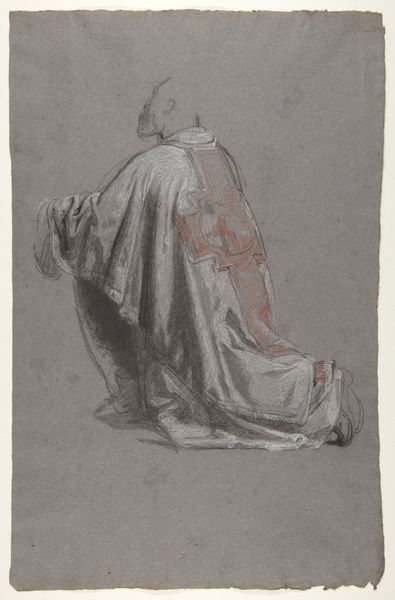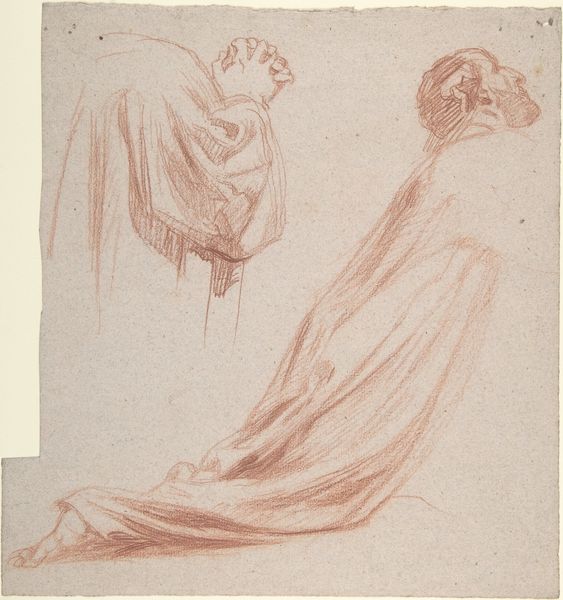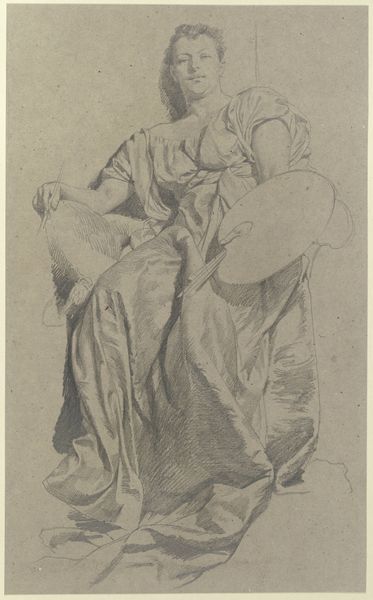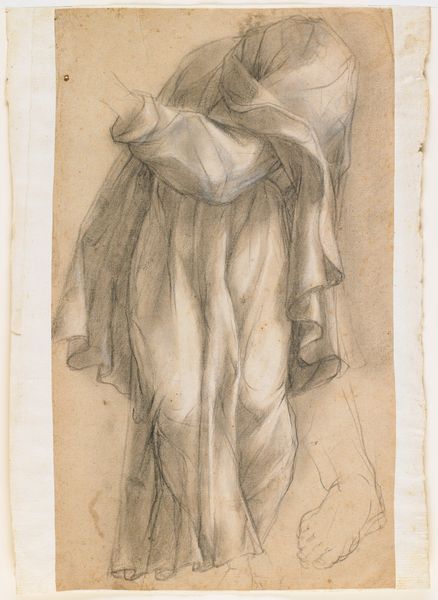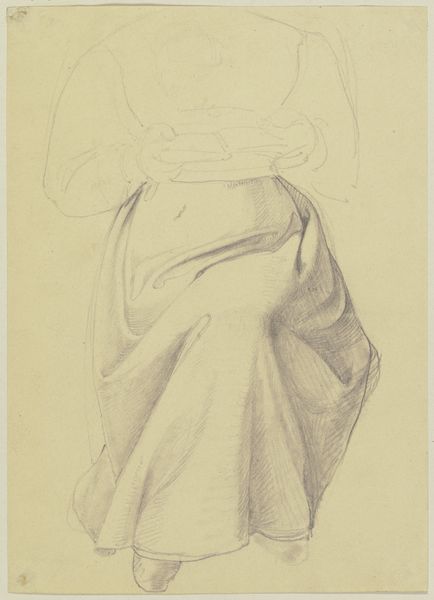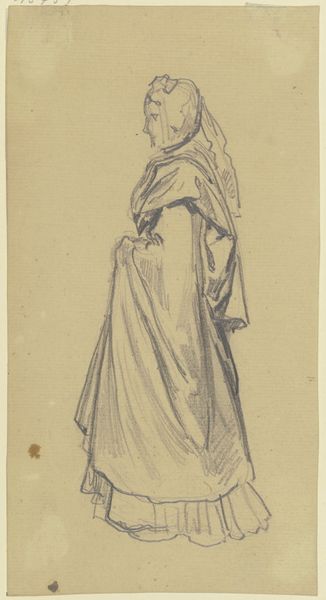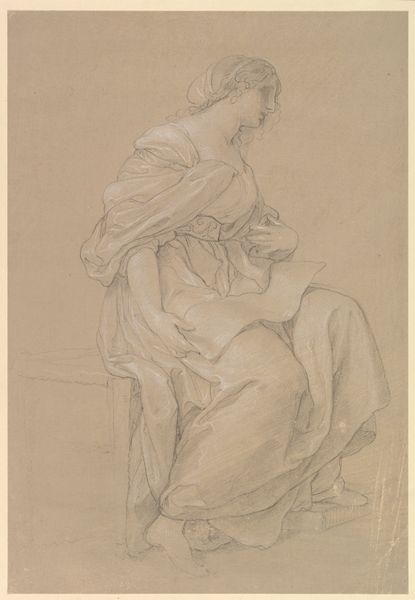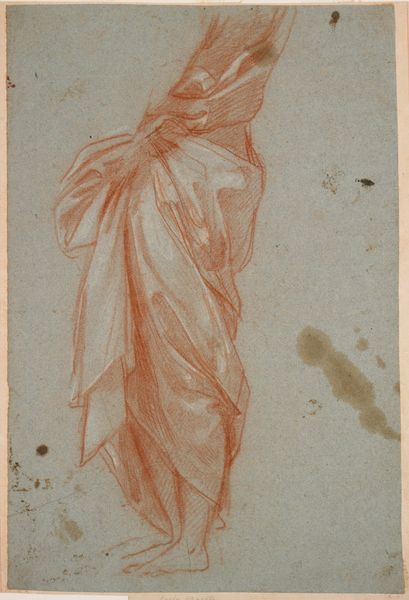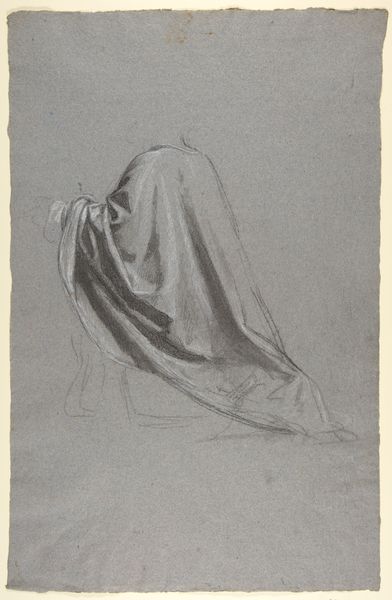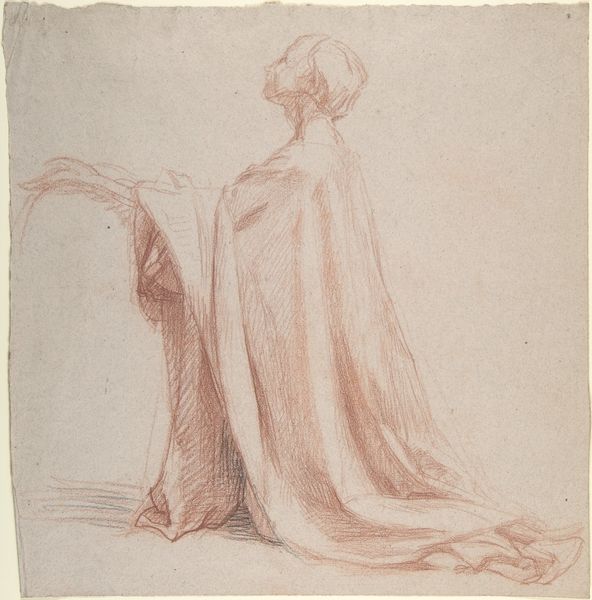
Drapery Study for a Bishop (lower register; study for wall paintings in the Chapel of Saint Remi, Sainte-Clotilde, Paris, 1858) 1830 - 1875
0:00
0:00
drawing, coloured-pencil
#
portrait
#
drawing
#
coloured-pencil
#
coloured pencil
#
academic-art
Dimensions: 19 x 11 13/16 in. (48.4 x 30.1 cm)
Copyright: Public Domain
Curator: Here we have Isidore Pils’ “Drapery Study for a Bishop,” created sometime between 1830 and 1875. It’s a colored-pencil drawing on paper, currently residing here at the Met. What are your first thoughts? Editor: It's… serene. Almost ghostly. The way the fabric drapes, it's like watching water flow or smoke billow. The red pencil on that grey paper makes the subject almost otherworldly. There’s a feeling of devout silence here. Curator: Indeed. It’s a study for the wall paintings in the Chapel of Saint Remi, at Sainte-Clotilde in Paris. Pils was, in his time, celebrated for history paintings that carried a certain gravitas. You can certainly see that foreshadowed here, even in a simple study. Editor: Right, knowing its purpose adds depth. It's no longer just fabric; it's about the weight of religious authority and tradition. The incompleteness adds something too. It's like witnessing the moment an idea takes shape, not yet fully formed, still searching. The Bishop feels less like a character and more a symbolic form emerging from the artist’s imagination. Curator: Absolutely. Academic art like this, especially in preliminary sketches, often reveals the artist's process so clearly. Pils wasn't just concerned with representation; he was building a visual vocabulary, exploring the semiotics of clerical robes and posture. These sorts of studies were also about social constructs too – visually reinforcing hierarchies of power, especially within the Church. Editor: Thinking about that period – the mid-19th century – this also makes me think of the rise of industrialisation. An artist spending time perfecting drapery for a religious mural…it’s almost defiant in its dedication to craftsmanship amid all that mechanical reproduction and industrial advance. This isn't mass-produced; it's deliberately, lovingly, handcrafted. Curator: A great point. And thinking of it as existing at the Met, and other major collections, a study like this demonstrates that even works we think of as very polished, finished statements began life in more informal spaces of invention. Editor: It’s a humble reminder that even the grandest visions start with quiet moments of contemplation and humble tools like pencil and paper. And the way the light plays off those folds – timeless. Curator: Precisely. There is much to admire, it seems.
Comments
No comments
Be the first to comment and join the conversation on the ultimate creative platform.


